In Saskatchewan, spiders can be found in various habitats. These range from the grassy southern prairies to the lakes and forests found in the northern part of the province. On a wet morning, the ground is often covered with hundreds of dew-covered webs. Jumping spiders are pretty common, with the bold jumping spider observed most frequently.
Spiders in Saskatchewan Identification Chart
| Bold Jumping Spider | Red-backed Jumping Spider | — |
| Six-spotted Fishing Spider | Bold Jumping Spider | — |
| Western Black Widow Spider | — | — |
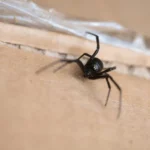 Western Black Widow (Latrodectus hesperus) - Have you ever heard about the Western Black Widow spider? It's a special spider found mostly in the western areas of North America. They are closely related to the northern black widow.… Continue Reading >
Western Black Widow (Latrodectus hesperus) - Have you ever heard about the Western Black Widow spider? It's a special spider found mostly in the western areas of North America. They are closely related to the northern black widow.… Continue Reading >
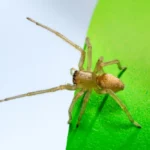 Northern Yellow Sac Spider (Cheiracanthium mildei) - Discover the fascinating world of the northern yellow sac spider, part of the cheiracanthiidae family. With a shared name across its genus, this spider stands out for unique reasons.… Continue Reading >
Northern Yellow Sac Spider (Cheiracanthium mildei) - Discover the fascinating world of the northern yellow sac spider, part of the cheiracanthiidae family. With a shared name across its genus, this spider stands out for unique reasons.… Continue Reading >
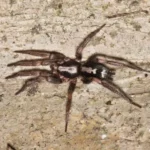 Parson (Herpyllus ecclesiasticus) - The eastern parson spider is a special kind of spider from the USA and Canada. It's part of the Gnaphosidae family. Instead of making webs to catch food, this spider likes to chase down its meals!… Continue Reading >
Parson (Herpyllus ecclesiasticus) - The eastern parson spider is a special kind of spider from the USA and Canada. It's part of the Gnaphosidae family. Instead of making webs to catch food, this spider likes to chase down its meals!… Continue Reading >
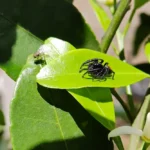 Red Back Jumping Spider (Phidippus johnsoni) - The Red Back Jumping Spider pops with vibrant red on its rounded belly. This colorful creature loves to leap around, making it a standout among American spiders.… Continue Reading >
Red Back Jumping Spider (Phidippus johnsoni) - The Red Back Jumping Spider pops with vibrant red on its rounded belly. This colorful creature loves to leap around, making it a standout among American spiders.… Continue Reading >
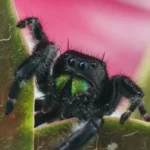 Bold Jumping (Phidippus audax) - Bold jumping spiders are super cool members of the Salticidae spider family. They get attention for their amazing jumps and colorful looks. Instead of using webs to catch food, they like to sneak up on bugs and jump on them!… Continue Reading >
Bold Jumping (Phidippus audax) - Bold jumping spiders are super cool members of the Salticidae spider family. They get attention for their amazing jumps and colorful looks. Instead of using webs to catch food, they like to sneak up on bugs and jump on them!… Continue Reading >
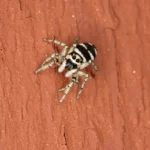 Zebra (Salticus scenicus) - Discover the fascinating world of the Zebra Spider, a creature from the northern hemisphere with stripes like a zebra. These lively spiders don't spin webs to catch their dinner.… Continue Reading >
Zebra (Salticus scenicus) - Discover the fascinating world of the Zebra Spider, a creature from the northern hemisphere with stripes like a zebra. These lively spiders don't spin webs to catch their dinner.… Continue Reading >
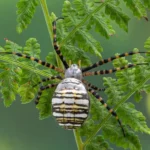 Banded Garden (Argiope trifasciata) - The banded garden spider is a common spider with two types: Argiope trifasciata deserticola and Argiope trifasciata kauaiensis. They prefer warm places and usually aren't around in cold winters because they don't like the chill.… Continue Reading >
Banded Garden (Argiope trifasciata) - The banded garden spider is a common spider with two types: Argiope trifasciata deserticola and Argiope trifasciata kauaiensis. They prefer warm places and usually aren't around in cold winters because they don't like the chill.… Continue Reading >
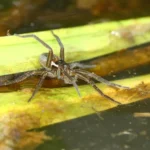 Six-spotted Fishing (Dolomedes triton) - Discover the Six-spotted Fishing Spider, often known as the dock spider. These large, semi-aquatic spiders are daytime hunters. They're experts at waiting near water edges, among bushes, ready to catch their next meal.… Continue Reading >
Six-spotted Fishing (Dolomedes triton) - Discover the Six-spotted Fishing Spider, often known as the dock spider. These large, semi-aquatic spiders are daytime hunters. They're experts at waiting near water edges, among bushes, ready to catch their next meal.… Continue Reading >
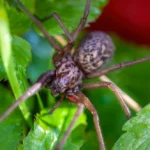 Giant House (Eratigena atrica) - Discover fascinating details about the Giant house spiders! Part of the Eratigena genus, these spiders may have a large appearance, but they're actually quite harmless.… Continue Reading >
Giant House (Eratigena atrica) - Discover fascinating details about the Giant house spiders! Part of the Eratigena genus, these spiders may have a large appearance, but they're actually quite harmless.… Continue Reading >
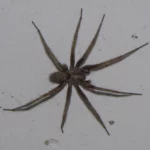 Barn Funnel Weaver (Tegenaria domestica) - Discover the Barn Funnel Weaving Spider, a spider known by various names worldwide, like the Domestic House Spider in Europe and the Common House Spider in the Pacific Northwest.… Continue Reading >
Barn Funnel Weaver (Tegenaria domestica) - Discover the Barn Funnel Weaving Spider, a spider known by various names worldwide, like the Domestic House Spider in Europe and the Common House Spider in the Pacific Northwest.… Continue Reading >
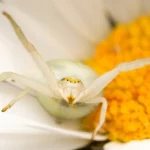 Goldenrod Crab (Misumena vatia) - Goldenrod Crab Spiders are super cool! They can change colors and hang out on flowers, waiting for their food. Instead of making big webs, they use silk for catching food or keeping their eggs safe.… Continue Reading >
Goldenrod Crab (Misumena vatia) - Goldenrod Crab Spiders are super cool! They can change colors and hang out on flowers, waiting for their food. Instead of making big webs, they use silk for catching food or keeping their eggs safe.… Continue Reading >
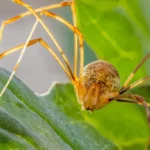 Long Bodied Cellar (Pholcus phalangioides) - The long-bodied cellar spiders are quite interesting! Often seen in America's dark and damp spots, they have really long legs. This is why some folks call them daddy-long-legs.… Continue Reading >
Long Bodied Cellar (Pholcus phalangioides) - The long-bodied cellar spiders are quite interesting! Often seen in America's dark and damp spots, they have really long legs. This is why some folks call them daddy-long-legs.… Continue Reading >